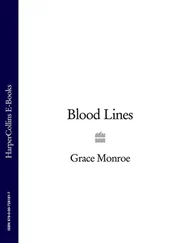Table 1-1 Factors that influence the quality of platelet concentrates
| Preparation step |
Critical factor |
Details |
| Blood collection |
Needle Tubing of butterfly needle Syringe/tube Lag |
Gauge, length, material, surface modification Diameter, length, material Materials, surface modification Distance between blood-collection space and centrifuge |
| Centrifuge |
Tube Rotator Centrifugal condition |
Shape, material, surface modification Swing or angle Force, duration |
| Other handling |
Pipetting Coagulation |
Technique, material CaCl 2, thrombin, glassware |
Standardizing PRP sequestration and application protocols
A rush to standardize PRP protocols could prevent researchers from critical discoveries found only through overcoming clinical obstacles that may defy established norms. For example, a definition of PRP in 2001 proposed an optimal clinical healing concentration of 1,000,000 platelets/µL in a 5-mL volume of plasma for bone. 149But in 2008, a platelet gel study concluded that a concentration of about 1.5 × 10 6plt/mL appeared to be optimal for proliferation, migration, and invasion of endothelial cells, showing that higher concentrations of growth factors can adversely affect wound healing for soft tissues. 150
Despite the general similarity in the protocols for preparing PRP, a number of variables affect whole blood centrifugation for platelet concentration and volume: platelet size, anatomical differences of patients, hematocrit variability, the amount and location of autologous blood drawn, the centrifugal forces and number/duration of spins, and temperature variants (including a refrigerated centrifuge; Table 1-1). 151–157
Compounding the problems of standardization are variations in centrifugation terminology (for example, rotation-per-minute versus g-force), centrifuge rotor radius, patient age and sex, 158activating or not activating PRP before application, 159,160using noncommercial PRP kits, needle bore size, and types of anticoagulants or lack thereof.
The variety of methods for delivering PRP to a wound site demonstrates the evolving and sometimes competing techniques for applying PRP and other biologics in wound healing; however, reliable clinical results often require replicable delivery methods in addition to standard production methods. For example, hydrogels, sponges, and nanofiber scaffold fabrication can be used for treating bone defects with PRP. 159
So clinicians must be wary about too-rigid standardization of the principles and technologies of platelet sequestration, the nomenclature and classification of platelet-rich products, and the application of those products for wound healing. The dynmaic and often contradictory nature of PRP derivations and clinical applications across the medical spectrum may in fact represent opportunities for greater scientific and medical understanding and advancement.
The dental and medical community has traveled a great distance since the mid-1980s when platelets were understood essentially as cells promoting hemostasis. The discovery of growth factors released by platelets introduced regenerative medical therapies that have become the present focus of a great deal of speculation and experimentation in the medical profession.
The succeeding chapters cover both the present and future science of autologous blood concentrates by casting more light than heat on the ongoing conversations concerning standardization and replication of techniques and procedures. It is the author’s hope that these chapters will contribute valuable insights concerning biologic/regenerative therapies, helping to remove much of the skepticism regarding the applications of PRP and related autologous products used in a growing number of medical fields, but particularly the fields of oral and maxillofacial surgery, periodontics, dental implants, and facial cosmetic surgery.
References
1. Marx RE, Garg A. Dental and Craniofacial Applications of Platelet-Rich Plasma. Chicago: Quintessence, 2005.
2. Knighton DR, Silver IA, Hunt TK. Regulation of wound-healing angiogenesis-effect of oxygen gradients and inspired oxygen concentration. Surgery 1981;90:262–270.
3. Knighton DR, Hunt TK, Scheuenstuhl H, Halliday BJ, Werb Z, Banda MJ. Oxygen tension regulates the expression of angiogenesis factor by macrophages. Science 1983;221:1283–1285.
4. Marx RE, Johnson RP. Studies in the radiobiology of osteoradionecrosis and their clinical significance. Oral Surg Oral Med Oral Pathol 1987;64:379–390.
5. Hunt TK. The physiology of wound healing. Ann Emerg Med 1988;17:1265–1273.
6. Marx RE, Ehler WJ, Tayapongsak P, Pierce LW. Relationship of oxygen dose to angiogenesis induction in irradiated tissue. Am J Surg 1990;160:519–524.
7. Davis JC, Hunt TK (eds). Problem Wounds—The Role of Oxygen. New York: Elsevier, 1988.
8. Marx RE, Smith BR. An improved technique for development of the pectoralis major myocutaneous flap. J Oral Maxillofac Surg 1990;48:1168–1180.
9. Cordeiro PG, Disa JJ, Hidalgo DA, Hu QY. Reconstruction of the mandible with osseous free flaps: A 10-year experience with 150 consecutive patients. Plast Reconstr Surg 1999;104:1314–1320.
10. Crowther M, Brown NJ, Bishop ET, Lewis CE. Microenvironmental influence on macrophage regulation of angiogenesis in wounds and malignant tumors. J Leukoc Biol 2001;70:478–490.
11. Moeller BJ, Cao Y, Vujaskovic Z, Li CY, Haroon ZA, Dewhirst MW. The relationship between hypoxia and angiogenesis. Semin Radiat Oncol 2004;14:215–221.
12. Ramakrishnan VR, Yao W, Campana JP. Improved skin paddle survival in pectoralis major myocutaneous flap reconstruction of head and neck defects. Arch Facial Plast Surg 2009;11:306–310.
13. Hunter S, Langemo DK, Anderson J, Hanson D, Thompson P. Hyperbaric oxygen therapy for chronic wounds. Adv Skin Wound Care 2010;23:116–119.
14. Larsson A, Uusijärvi J, Eksborg S, Lindholm P. Tissue oxygenation measured with near infrared spectroscopy during normobaric and hyperbaric oxygen breathing in healthy subjects. Eur J Appl Physiol 2010;109:757–761.
15. Vanni CM, Pinto FR, de Matos LL, de Matos MG, Kanda JL. The subclavicular versus the supraclavicular route for pectoralis major myocutaneous flap: A cadaveric anatomic study. Eur Arch Otorhinolaryngol 2010;267:1141–1146.
16. Schreml S, Szeimies RM, Prantl L, Karrer S, Landthaler M, Babilas P. Oxygen in acute and chronic wound healing. Br J Dermatol 2010;163:257–268.
17. Knighton DR, Hunt TK, Thakral KK, Goodson WH 3rd. Role of platelets and fibrin in the healing sequence: An in vivo study of angiogenesis and collagen synthesis. Ann Surg 1982;196:379–388.
18. Hunt TK, Knighton DR, Thakral KK, Goodson WH 3rd, Andrews WS. Studies on inflammation and wound healing: Angiogenesis and collagen synthesis stimulated in vivo by resident and activated wound macrophages. Surgery 1984;96:48–54.
19. Dvorak HF, Harvey VS, Estrella P, Brown LF, McDonagh J, Dvorak AM. Fibrin containing gels induce angiogenesis. Implications for tumor stroma generation and wound healing. Lab Invest 1987;57:673–686.
20. Ofosu FA. The blood platelet as a model for regulating blood coagulation on cell surfaces and its consequences. Biochemistry (Mosc) 2002;67:47–55.
21. Nurden AT, Nurden P, Sanchez M, Andia I, Anitua E. Platelets and wound healing. Front Biosci 2008;13:3532–3548.
22. Roy S, Driggs J, Elgharably H, et al. Platelet-rich fibrin matrix improves wound angiogenesis via inducing endothelial cell proliferation. Wound Repair Regen 2011;19:753–766.
Читать дальше












